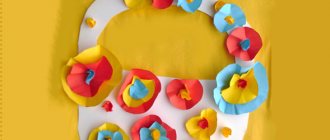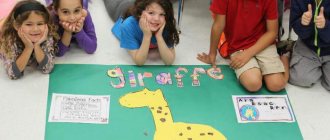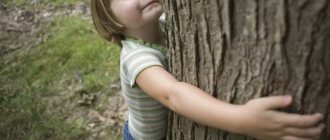“Non-traditional forms of work in physical education with preschool children”
Kozlova T.A. MAOU "Progymnasium No. 119", Saransk
physical education instructor
“Non-traditional forms of work in physical education with preschool children
”
In the last decade
There is a trend towards deterioration in the health of children throughout the world. Environmental problems, various negative household factors, chemical additives in food, poor-quality water, accumulating irritations in society associated with an unsatisfactory economic situation are just some of the factors that aggressively affect the health of a preschooler. The well-being of society largely depends on the health of children.
Physical health
– a fundamental condition for the spiritual and moral development of a person. In preschool age, the foundation of health is laid: the life systems and functions of the body mature and improve, its adaptive capabilities develop, its resistance to external influences increases, posture is formed, physical qualities and habits are acquired, and strong-willed character traits are developed, without which a healthy lifestyle is impossible.
Physical culture covers those aspects of life and education that are crucial for the normal physical development of a person’s motor sphere. Therefore, it is extremely important to properly organize work in this direction precisely in preschool age, which will allow the body to accumulate strength and ensure in the future not only full physical, but also diversified personality development.
Physical education as the main form of work in physical education has taken a strong place in preschool educational institutions, which solves a whole range of health-improving, educational and educational tasks.
At the same time, the development of the problem of development of preschool education based on an alternative organization of the educational process lags behind the needs of society and the educational system as a whole. The relevance of the problem of using alternative physical education activities of a non-traditional orientation, which take into account the characteristics of the motives and needs of preschool children, becomes particularly acute for preschool educational institutions. A preschool institution, as the first link in continuous health-preserving education, involves the choice of alternative forms and methods of organizing the educational process to preserve and strengthen the health of children. The development of children is closely related to health: only a healthy child can develop correctly and fully.
Many teachers are creative in organizing physical education classes, coming up with interesting forms of conducting them, content, methods and techniques, thereby ensuring the formation of a strong, sustainable interest in physical education in children and the need to engage in it. But at the same time, not all preschool educational institutions fully solve these problems: they take a formal approach to conducting physical education classes, and mainly use traditional classes. Therefore, physical education classes are dry, monotonous, and as a result of this, there is a lack of interest, desire to engage in physical education, and poor physical development and health. Hence the need arises to change the forms of conducting physical education classes to non-traditional ones.
Preserving and strengthening children's health through non-traditional forms of organizing physical education classes
Municipal budgetary preschool educational institution "General developmental kindergarten No. 14" Kolosok ", village of Bobrovy Dvory, Gubkinsky district, Belgorod region
Message
“Preservation and strengthening of children’s health through non-traditional forms of organizing physical education classes”
(from work experience)
Prepared by: physical education instructor
Kostyukova S.P.
2020
“Preservation and strengthening of children’s health through non-traditional forms of organizing physical education classes”
“Health cannot be taught
“We need to cultivate the need to be healthy.”
Physical health is a fundamental condition for the spiritual and moral development of a person. In preschool age, the foundation of health is laid: the life systems and functions of the body mature and improve, its adaptive capabilities develop, its resistance to external influences increases, posture is formed, physical qualities and habits are acquired, and strong-willed character traits are developed, without which a healthy lifestyle is impossible.
The problem of using alternative physical education activities of a non-traditional orientation, which take into account the specific motives and needs of preschool children, becomes particularly acute.
The relevance of the topic I have chosen is determined by the special socio-economic and socio-hygienic situation in the country. In the last decade, there has been a clear trend towards deterioration in the health and physical development of children. Parents, medical and pedagogical workers note lags, delays, violations, deviations, non-compliance with norms in the development of children, and the inferiority of their health. This applies primarily to the nervous system and musculoskeletal system.
A unified basis for the problems of physical and neuropsychic development of children led to the creation of motor programs for child development. Therefore, the introduction of innovative technologies and the inclusion of health measures became a priority and timely task for me.
The use of alternative (non-traditional) physical education activities will increase interest in physical education and improve health if:
— create a system of interesting physical education activities;
— think over a specially organized methodology for physical education classes, including the selection of forms of conduct, content, methods and techniques;
— to base non-traditional forms of physical education classes on the following criteria: the interest of preschool children in physical education, the level of physical fitness and health status, the complexity of the content of physical education classes.
Ensuring the correct physical education of children and the good health of each child is possible only under the condition of clearly organized medical and pedagogical control over physical development and health status and planning of all health-improving and educational work with children. Since this school year, I have continued to work on improving the health of children through the introduction of health-saving technologies and alternative activities into the educational process.
The goal of my work is to preserve and strengthen the health of children. To optimally implement the health-improving, educational and educational direction of physical education, taking into account the individual development capabilities of the child.
The main tasks of protecting and promoting children’s health include:
— strengthening children's health;
— nurturing the need for a healthy lifestyle;
— development of physical qualities and ensuring a normal level of physical fitness in accordance with the capabilities and state of health of the child;
- introducing children to the traditions of big-time sports.
This work is based on the following methodological principles: accessibility, consistency and systematicity.
Currently, I am working on new approaches to the formation of physical culture based on three main areas:
1. Socio-psychological, aimed at creating the need to master the values of physical culture.
2. Intellectual, which involves obtaining a complex of theoretical and practical knowledge. Children receive knowledge of valeology in an accessible form. For this purpose, I use the integration of modern programs for the physical education of preschoolers, the latest in methodological literature, as well as the project-based teaching method.
3. Motor – development of physical qualities, motor abilities and skills, as well as the use of physical potential.
Thus, physical development and health should be equally aimed at the physical (physical) and neuropsychic development of the child.
SYSTEM OF PHYSICAL EDUCATION AND HEALTH WORK
The system of physical education and health work with children is based on the use of traditional and non-traditional forms of work in work.
One of the main factors in children’s health is physical activity. Muscular activity, as an important factor in the body’s self-regulation, leads to very significant changes in the child’s condition.
Based on diagnostic data, a comprehensive system for improving the health of children for all age groups was compiled, which organically included both health-improving, treatment-and-prophylactic, and educational work.
All work on the development of basic movements and physical fitness is carried out taking into account diagnostic data, which allows us to determine priority tasks and prospects for the future.
Analysis of the survey of the main types of movements of children at the beginning of the school year allows us to correctly determine learning objectives for the coming year.
INDIVIDUAL APPROACH
We must not forget about the need to monitor the physical condition of children.
At the same time, during morning exercises and physical education classes, I take into account and implement an individual approach to children whose physical activity is limited by their health condition or group; which must be taken into account, as well as for children newly admitted or physically somewhat weakened after illness. It should be remembered that children are not able to control their condition on their own and responsibility for their health lies with the teacher, and special attention should be paid to signs of physical distress, when they appear it is necessary to reduce the load or even stop the lesson for a while.
I carry out individual correctional work with children who are lagging behind in physical development: we perform exercises to strengthen all muscle groups using exercise machines, some basic types of movements, taking into account their capabilities and state of health, but without reducing the requirements for the quality of movements.
NON-TRADITIONAL FORMS
When choosing non-traditional forms, the instructor (educator) must take into account the tasks, content, place and conditions of the lesson, the physical fitness of the children, their degree of proficiency in certain types of movements, the individual characteristics and interests of the children.
The healing effect achieved through non-traditional forms is closely related to the positive emotions of children, which have a beneficial effect on the child’s psyche.
Breathing exercises
Among the methods of physical education that have good health benefits, breathing exercises are currently becoming increasingly widespread in preschool educational institutions. Pathological changes that occur during colds weaken the respiratory muscles, which leads to deterioration of pulmonary ventilation. Using physical methods, we restore impaired respiratory functions, prevent the development and eliminate existing changes in the bronchopulmonary system, which result in oxygen deficiency. Therefore, I pay great attention to the use of elements of breathing exercises in classes, which contributes to the development of respiratory muscles, increased mobility of the chest and diaphragm, and improved blood circulation in the lungs. Regular exercise increases the strength of the intercostal respiratory muscles and diaphragm, and thereby increases the tidal volume of the lungs. In addition, the exercises contain additional reserves for training breathing and attention.
Psychomuscular training
Almost all new programs for physical education of preschoolers include psychoprophylactic measures in physical education and health activities, including training in psychoregulation.
The basis of psychomuscular training is muscle relaxation / muscle relaxation /. With the help of certain techniques (contrast of muscle tension and relaxation, controlled breathing and the use of self-suggestion), children learn to voluntarily relax their muscles. Their muscle tone is often altered, so the inclusion of exercises for active relaxation and muscle tension is necessary, especially in combination with poetry, or calm music (the sound of the surf, etc.).
Self-massage
The use of physical education for recreational purposes develops in children vital motor skills and abilities, as well as knowledge in the field of hygiene, medicine and physical education, which contribute to strengthening their health.
Self-massage is an important means of physical education; it helps to expand the capillaries of the skin, accelerates blood circulation, enhances the functions of the glands, which has a positive effect on metabolism.
Eurythmic gymnastics
Eurythmic gymnastics is a type of health-improving and developmental gymnastics based on the rhythmic patterns of speech, music, general developmental exercises, basic steps and aerobic elements (see appendix).
The main tasks solved during eurythmy gymnastics classes:
• formation and correction of posture, sense of pace and rhythm of movements, attention, spatial orientation;
• development of motor qualities: strength, endurance, speed, flexibility, agility;
• correction of coordination of movements of the hands (finger gymnastics, inclusion of small movements of the hands) and legs in general developmental exercises;
• improvement of mental state (reduction of anxiety, aggression, emotional and muscle tension, improvement of attention, imagination);
• expansion of emotional experience, development of skills of interaction with each other;
• formation of creativity (“rhythmic fantasy” on given and arbitrary topics), creating an atmosphere of joy and stimulating the development of creative abilities.
"Theater of Physical Education"
“Theater of physical education for preschoolers” is a new approach to physical education, which involves the use of a new methodology for the physical development of children.
Theater is a playful form, a new system of physical health, correction, prevention and creative self-expression for children.
Each educational lesson, according to the “Theater of Physical Education of Preschool Children” program, is a situational mini-game (media), in which children enter the stage of role-playing or “imitative” imitation play, acting either in the roles of animals, or in the roles of birds, insects or fairy-tale heroes. During classes, pictures - diagrams, music - are regularly used.
In such classes, children do not notice that this is a physical education lesson, and are full participants in a fabulous theatrical performance (see appendix).
JOINT PHYSICAL ACTIVITIES PARENTS AND CHILDREN
The main goal of such classes is to help parents and children feel the joy of joint physical activity, and for parents to establish emotional-motor contact with their children. To promote the development of interpersonal communication between a child and an adult.
To make classes interesting and exciting, plot-based, integrated and game forms of joint physical education classes should be used in classes. The basis of plot activities (see appendix) are the joint movements of children and adults, organically combined with the development of the plot. The content of integrated classes allows the child, together with the parent, to overcome difficulties and solve problem situations.
The effectiveness of classes depends not only on the form and content, but also on the rational organization of children and adults. Most of the time, the child completes tasks together with an adult; Moreover, each of them acts for their own child as a partner, assistant, coach.
Thus, in working with parents the following tasks are solved: to increase their responsibility for raising a child, to awaken their interest and desire to work with him, to arouse a desire to cooperate with the kindergarten.
CORRECTIVE GYMNASTICS
General developmental and corrective exercises play a special role in the physical education of children. They help to selectively influence the child’s body and can be used to prevent and correct certain deviations in the development of motor skills and deformations of the musculoskeletal system.
Using non-traditional technologies, I noticed that children got sick less, their attention and mood improved. Children have become more dexterous, resilient and strong. Thus, the use of traditional and non-traditional forms of work, hardening and a number of other non-medicinal means of healing in the physical education and health work of a kindergarten gives positive results.
Children make contact easily, they are cheerful and active.
Conclusion: organized educational, physical and recreational work has a positive effect on the development of children: it helps to strengthen mental health and normalize their social-adaptive sphere.
The process of improving public relations is endless. All times have their difficulties and difficulties, and no matter how much we talk about the need to change the living conditions of children, the main thing here is not only this - it is important that people think about their behavior.
The development of a child depends not only on a good biological basis, but also on the environment in which the child grows, on the method and level of satisfaction of the child’s needs. His entire subsequent life largely depends on the upbringing, physical and moral development of a child. Many positive and negative qualities of a person have their beginning in childhood.
“To make a child smart and sensible, make him strong and healthy”



